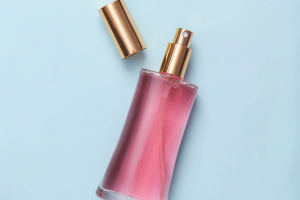Essential Oils Guide
Essential oils are volatile aromatic substances extracted from various parts of plants, such as flowers, leaves, stems, roots, and fruits, using methods like distillation, cold pressing, or solvent extraction.
Main Uses of Essential Oils
Essential oils are widely used in various fields due to their versatility. Here are their main uses:
1. Aromatherapy: By using diffusers or sprays, the aroma of essential oils can directly influence the brain through the olfactory system, regulating emotions and psychological states. For example, lavender oil is widely used to relieve stress and promote sleep, while lemon oil is commonly used to uplift mood and improve emotional well-being.
2. Skincare and Beauty: Essential oils are extensively used in skincare and beauty products. Certain essential oils, such as rose and tea tree oils, have antioxidant, antibacterial, and anti-inflammatory properties that help improve skin conditions, prevent acne, and reduce wrinkles.
3. Household Cleaning: Oils like tea tree and eucalyptus have strong antibacterial and antiviral properties, making them great additions to homemade cleaning solutions as natural disinfectants.
4. Massage and Physical Therapy: When mixed with carrier oils (like sweet almond oil or grapeseed oil), essential oils can be used for massage to relax muscles, relieve pain, and promote blood circulation.
5. Health and Wellness: Some essential oils, such as peppermint and ginger oils, can be inhaled or applied externally to help alleviate respiratory symptoms, nausea, digestive issues, and other health problems.
How to Use Essential Oils
There are various ways to use essential oils, each suitable for different needs and scenarios:
1. Diffusion: Use an essential oil diffuser or burner to disperse oils into the air, suitable for aromatherapy or improving indoor air quality. Only 3-5 drops are needed per use.
2. Inhalation: Put a few drops on a handkerchief or add them to hot water and inhale the steam to relieve respiratory issues or reduce stress.
3. Topical Application: Dilute essential oils with carrier oils and apply them to the skin for massage. Different oils have different dilution ratios, generally recommended between 1% and 3% (1 to 3 drops per 10 ml of carrier oil).
4. Bathing: Add a few drops of essential oil to warm water to relax the body and mind, nourish the skin, and soothe muscles.
5. Making Skincare Products: Mix essential oils with carrier oils, lotions, or creams to create customized skincare products that meet different skin needs.
Precautions
While essential oils have many benefits, there are some precautions to take:
1. Dilution Required: Due to their high concentration, using undiluted essential oils on the skin may cause irritation or allergic reactions. Always dilute with a carrier oil before use.
2. Avoid Photosensitivity: Some citrus oils (like lemon and sweet orange) are photosensitive. Avoid direct sunlight exposure after using these oils, as it can cause skin pigmentation or burns.
3. Pregnancy and Nursing: Exercise caution when using essential oils during pregnancy and breastfeeding. Some oils (like clary sage) may negatively affect the fetus or infant.
4. Children's Use: Use lower concentrations of essential oils for children and avoid certain highly potent oils (like peppermint and eucalyptus).
5. Allergy Testing: Before using a new essential oil, do a small patch test on the wrist or behind the ear to check for any allergic reactions.
Conclusion
By choosing high-quality essential oils and using them correctly, you can maximize their benefits while adhering to safety guidelines to avoid unnecessary risks. Understanding the basics of essential oils can help you make the most of these natural gifts to enhance your quality of life.


